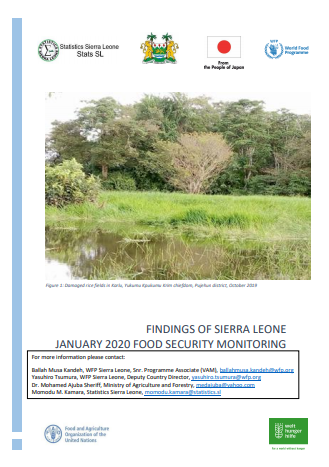
This latest food security analysis shows a deterioration in food security in Sierra Leone compared to February 2019, with the total food-insecure population increasing from 34 percent to 47.7 percent. This implies that almost half of the population of Sierra Leone (3,921,752) are not consuming enough nutritious diet to live a healthy life. The likely drivers of an increase in food insecurity in Sierra Leone are recurrent climatic shocks, including flooding and erratic precipitation pattern during the seasonal rains, in addition to a challenging macroeconomic situation. These shocks have not only increased short-term hunger, but also compromised the resilience of poor households. Whilst food insecurity is highest in rural districts, it should be noted that the January 2020 FSMS shows a sharp increase in the number of urban residents living in food insecurity. The global socio-economic downturn impacted by the COVID-19 may exacerbate the already difficult food security situation in the country.
WFP will continue to lead discussions on the ground, together with the Food Security Working Group, to review the implications along with making immediate decisions on how food security partners can work together to address the needs.
WFP will continue to lead discussions on the ground, together with the Food Security Working Group, to review the implications along with making immediate decisions on how food security partners can work together to address the needs.



